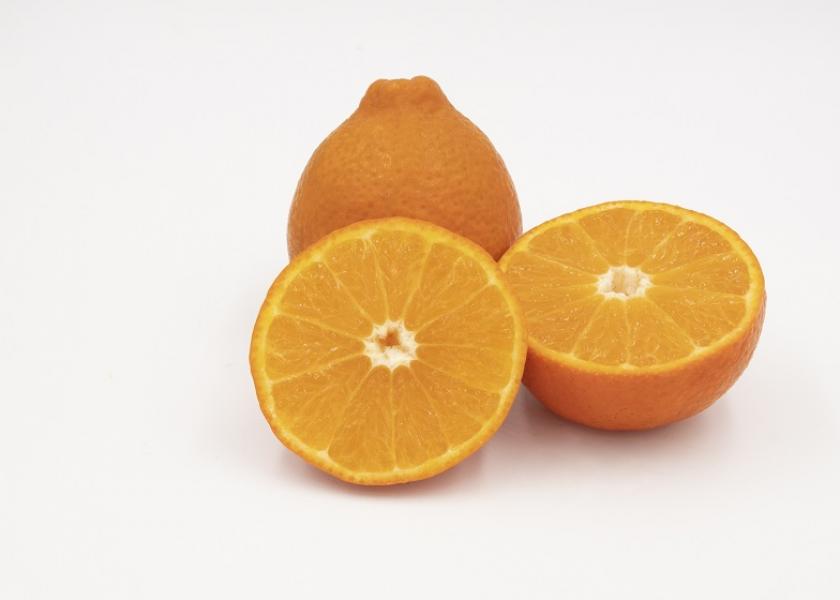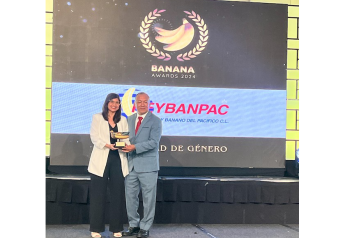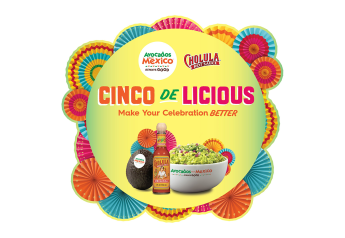Research looks for variety, rootstock resistance to HLB, citrus canker

Florida citrus country was almost paradise when Fred Gmitter went to the University of Florida in Gainesville to study for his doctorate during the 1980s.
“My first year in Gainesville, during spring break, took a trip down the peninsula, on my way to the Florida Keys, and I drove through Lake County, which used to be just an ocean of citrus trees,” he said. “And I was just blown away. Man, look at this place. This is big-time fruit farming, an amazing place, and it was bloom season. The air was just full of the smell of citrus flowers, and I thought I died and went to heaven."
Then, came freezes in the 1980s that knocked thousands of acres out of production in that region.
After that, canker wreaked its own havoc, and then came the citrus greening disease now known as huanglongbing, or HLB, and it overshadowed everything that came before it.
While Florida is not paradise lost for citrus growers, the landscape has changed dramatically in 40 years.
Gmitter, professor of horticultural sciences at the University of Florida’s Citrus Research and Education Center, began his career in 1985 and is working today to breed citrus varieties that could resist citrus canker and HLB.
Looking back
Gmitter said inspections found the Asian citrus psyllid — the bug that spreads citrus greening — in 1998, the first time officials confirmed it was in Florida.
Besides canker being in the headlines, as well, Florida citrus growers were hearing about a new bug called the citrus leaf miner.
“Citrus leak miner is like a real nuisance pest, and when that came into Florida, the growers kind of went crazy about it,” Gmitter. In fact, growers organized an international leaf minor conference.
“All my colleagues from outside the U.S. said, ‘You guys are crazy. I mean, it's just leaf miner, you know.'”
After a few years, the predator insects of the leaf miner started to diminish the pest's impact and growers learned how to manage the pest.
Unfortunately, HLB was just getting started, though.
When inspectors found the psyllid, greening was not yet present in Florida. Distracted by other concerns, growers didn't pay close attention to the potential problems with HLB, Gmitter said.
“Fast-forward seven years, and the first symptomatic tree was recognized,” Gmitter said. “And when that happened, they started looking and they were going across the state from Miami or toward the West Coast and moving up the East Coast, surveying, and some of the growth they found were already 25% of the trees were symptomatic,” he said. “So, the horse was out of the barn before we even had a chance to think about what to do about it.”
Gmitter said there are certain biological controls for the psyllid, but nothing has really stopped the insect from spreading HLB.
"There are some people in Florida who will tell you today that one of the biggest mistakes we made was really trying to eradicate the psyllid, spraying every two weeks with really toxic stuff,” he said. In the process, insecticides knocked out a lot of naturally occurring predators.
“There are some groves I'm familiar with, where they really didn't follow that plan,” he said. “They all have HLB. But they don't have it as bad as in some of the other places where it was a nuclear attack on the insect world.”
Gmitter said it is a hard thing to say if the state did the right thing by trying to really manage the psyllid with that aggressive approach.
Variety development
In terms of developing varieties that are resistant to HLB, Gmitter said it is sometimes two steps forward, one step back.
“We weren't breeding for HLB resistance before it got here, because we actually had no idea how to go about doing that,” he said. Everyone understands, of course, that a citrus variety that would be resistant to HLB would be a “wonderful option.”
“That’s always been kind of a target, and lots of people who've gone at it from different ways, different approaches and different technologies,” he said, noting that the first variety released from the University of Florida’s program at the Citrus Research and Education Center was one commonly known as Sugar Belle.
“We released that at the worst possible time in the history of Florida citrus, because it was just at the time that greening was really beginning to take off,” he recalled, with some pathologists at the time predicting the citrus industry was only five years away from ending.
“Nobody wanted to take a shot at a new variety,” he said. The Sugar Belle was selected because it looked like another variety that's marketed called the honeybell minneola, which was popular for Florida’s gift-fruit shippers because of its attractive appearance. However, the variety didn’t mature until January, which was less than optimal for Christmas demand.
The Sugar Belle, on the other hand, matured six weeks earlier and had a similar appearance to the honeybell. Intended as a fresh-market variety, Sugar Belle initially did not see a lot of demand from growers.
However, one grower on the east coast of Florida planted about 100 acres of the Sugar Belle.
“When the trees were about 2 years old, he called me up and said, 'You’ve got to come over here and look at these trees. They all have citrus greening.' And I went."
Sure enough, every tree had symptoms, notably mottled leaves.
Gmitter asked the grower if he was going to rip the grove up. The grower indicated no; he had spent about a million dollars on the planting and was going to leave it in the ground for a while and see what happens.
“That was a stroke of luck because Sugar Belle has turned out to become known as one of the more HLB-tolerant varieties that you can grow,” Gmitter said.
Even so, growers have been disappointed with the Sugar Belle in the last two years, not because of three health, but because of fruit quality, he said.
“In the last two years, we've had probably the warmest autumn, early winter weather on record,” he said, noting that warm nighttime temperatures may have prevented optimal fruit sugar and quality. “In the last two seasons, we've had just that kind of weather, and growers have had softer fruit, and it doesn't taste as good as it could. That's why I say one step forward and two steps back.”
One priority for the University of Florida’s breeding program has been rootstock development. “We've learned that there are some rootstocks that have better outcomes in the face of HLB than others,” he said. Both the University of Florida and the USDA are working to develop those kinds of rootstocks.
“HLB is a disease that gets worse if you have different kinds of stress on the tree,” he said. “If you have a drought stress, or a cold stress, or salinity stress, or anything else, and you compound the problems that HLB brings to the tree, and if you have a rootstock that can overcome most of those problems, your outcome is going to be much better than with a poorly adapted rootstock."
The variation in response to HLB among citrus varieties is quite broad, he said.
“There are some varieties that go down quick, but others that are really incredibly tolerant,” he said. “It is a long-term effort, a long-term project, but we have been working for 15 to 16 years with this disease and making progress by breeding citrus that is much more tolerant than the varieties that we started out with.”
Looking for the silver bullet
Gmitter said some want faster progress.
“People like to say, ‘Yeah, that takes too long. So why don't you just go find a gene and slap it in there [with] some [genetically modified] technology or CRISPR and solve the problem?’”
Gmitter said that, while Americans are happy to eat genetically modified food, such as corn in a burrito, the same is not true for consumers everywhere.
“Americans are sort of OK with GMO technology, but when you start looking outside of the U.S., there's a much more reluctant market.”
While that perception is arguably changing, Gmitter said it's hard to measure. “People have been saying that for 20 years, and it's changing and it's getting better, but it's really slow.”
It is no surprise, he said, that the top three juice brands coming out of Florida all have a statement on their packaging that says they're non-GMO products.
“That's kind of hard to walk back from, so I think the pure genetic engineering approach is a challenge,” Gmitter said.
CRISPR breeding efforts rely on GMO technology, though that process doesn’t introduce any new genes to an organism.
While the USDA is much more liberal in regulating CRISPR modifications compared to traditional genetically modified organisms, it still is not an easy process, he said.
“A lot of different labs have been working, since the beginning, to try and understand the interaction of the citrus plant with this pathogen, and what gene should we be targeting to modify to make the plants resistant. And the answer so far has been we don't have a single one gene target that we can modify," he said. "You are literally looking at the expression of 30,000 different genes, and you try to find the ones that are either turned on or turned off in the tolerance situation."
It's not that researchers have to figure out one gene, but thousands of genes with complicated interactions.
“It’s hard to know what is the very first trigger when the pathogen and the citrus cells first meet, because we can't culture the pathogen that causes the disease,” he said. "Because we can't culture [greening], what we're really looking at is a downstream cascade of events of something that was triggered farther upstream. That’s part of the problem.”
Gmitter said there are a handful of private companies engaged with CRISPR technology.
“There's one in Florida that's licensed some technology that was developed by a colleague of ours at the University of Florida,” he said. “They are the same challenge; what should be the target? With citrus canker, you can spray the bacteria on the leaf and immediately find out what's going on in the cells of the citrus leaf when it meets those bacteria. From there, a scientist can theoretically find a single gene or two that you can modify, and you can make the plants resistant.
“Trying to get to the bottom line of all this is a long-term process, because we haven't been able to identify the appropriate targets [for citrus greening],” he continued. “And if you find the appropriate target or targets and you modify the plants, now, you have to ask, 'Are they resistant and how long do you test them?'"
For example, is testing for one year in a greenhouse setting enough for growers set to invest millions of dollars?
"People are going to want to see some field data; they want to know that this disease resistance holds up in the field,” he said, noting that varieties may look good in the greenhouse and in the field for a couple of years, but then crash.
“I always ask the question: If I'm a multimillion-dollar investor, at what point in time do I say, 'OK, I'm convinced this sucker is really resistant, and I'm going to put millions and millions of dollars into new trees?'” Gmitter said. “That's a tough question to answer."
Gmitter said another key question is: How much testing is enough?
“When it comes to the point of putting your money on the table, I think that's when people begin to get more and more nervous,” he said. “We've experienced that, even with the varieties that we release, that people liked the fruit, they liked the juice. But then, when it's OK, I am going to plant 500 acres, and how much data do you guys have? How many years have you looked at?”
The search for the answers continue.
“I heard five years ago that one of my colleagues had figured it out, they had the gene,” he said. “And I thought, hallelujah, we can go back and breed for fruit quality and color and flavor and all the other things that are a lot more fun to breed for them and not being HLB-resistant,” he recalled.
That answer still hasn't come.







